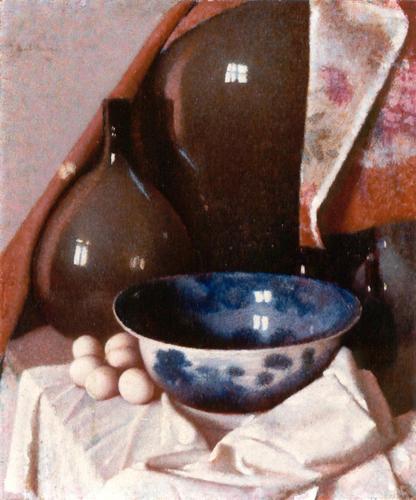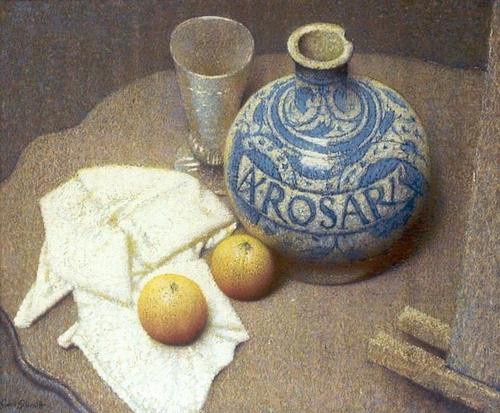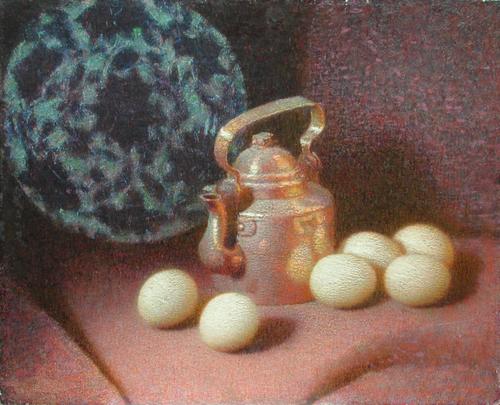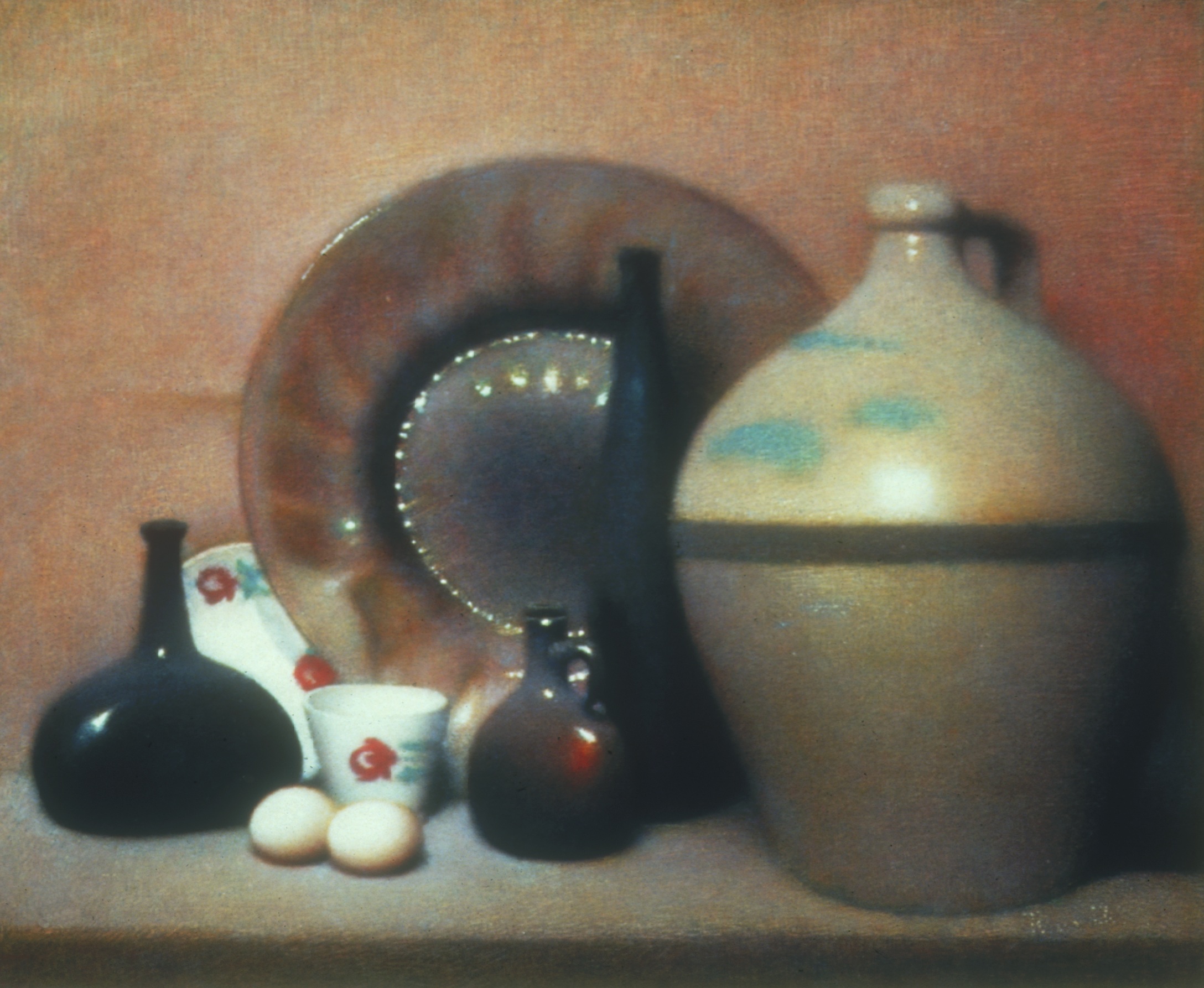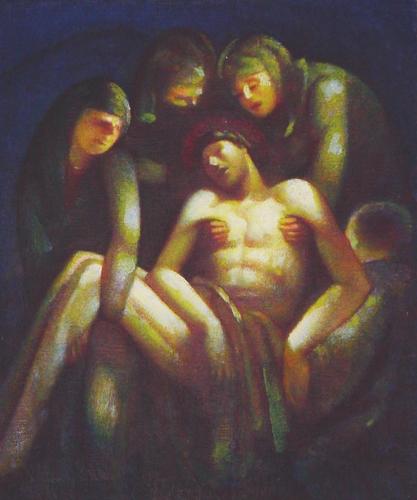 Two years ago, I wrote a feature on the American artist Carl Schmitt (1889-1989). What has prompted me to look at his work again is the publication of a beautiful book of his work called Carl Schmitt, The Vision of Beauty. Schmitt was a classically trained American artist who was a friend of Hilaire Belloc, who owned work by him, and who contributed a weekly column to Chesterton’s Weekly Review when Belloc was its editor. He was much travelled around Europe, but spent most of his adult life living in Connecticut. I like his still lives particularly see below and at www.carlschmitt.org). He was a faithful Catholic all his life and quite apart from his art his Catholic legacy is strong. He had 10 children who all kept the faith and one of whom was a priest. Descendants of Schmitt were involved at the instigation of Thomas Aquinas College in California and founded and still run Trivium School, an independent Catholic boarding high school with a great books curriculum. This is on the other side of the country and less than an hour south of Thomas More College, in Massachusetts. Sam Schmitt, who wrote this book and works for the foundation that works to preserve his memory is a scholar of chant and the liturgy and I met him before he took his current role when he was working with us at TMC. It was with great pleasure that I received this book to review.
What caught my eye at the time was this deposition. This is a good example, in my opinion, to study when considering how to balance the general and the particular characteristics of the person. For good sacred art, that balance has to be right.
Two years ago, I wrote a feature on the American artist Carl Schmitt (1889-1989). What has prompted me to look at his work again is the publication of a beautiful book of his work called Carl Schmitt, The Vision of Beauty. Schmitt was a classically trained American artist who was a friend of Hilaire Belloc, who owned work by him, and who contributed a weekly column to Chesterton’s Weekly Review when Belloc was its editor. He was much travelled around Europe, but spent most of his adult life living in Connecticut. I like his still lives particularly see below and at www.carlschmitt.org). He was a faithful Catholic all his life and quite apart from his art his Catholic legacy is strong. He had 10 children who all kept the faith and one of whom was a priest. Descendants of Schmitt were involved at the instigation of Thomas Aquinas College in California and founded and still run Trivium School, an independent Catholic boarding high school with a great books curriculum. This is on the other side of the country and less than an hour south of Thomas More College, in Massachusetts. Sam Schmitt, who wrote this book and works for the foundation that works to preserve his memory is a scholar of chant and the liturgy and I met him before he took his current role when he was working with us at TMC. It was with great pleasure that I received this book to review.
What caught my eye at the time was this deposition. This is a good example, in my opinion, to study when considering how to balance the general and the particular characteristics of the person. For good sacred art, that balance has to be right.
Some time ago, I wrote an article (Is Some Sacred Art Too Naturalistic), about the tendency amongst modern naturalistic artists to paint sacred art in which the rendering, especially the faces, is too naturalistic and too particular to one person, like a portrait. The result is paintings that look like the next door neighbor dressed up in old-fashioned clothing in a staged Victorian tableau. In my assessment there was too much emphasis on the particular and not enough on the general human characteristics of the saint or person depicted. It is the general characteristics that enable us to relate to those aspects that we are supposed to be inspired by and imitate, such as virtue. By definition, we can only aspire to imitate those aspects that are common to us. It is not possible to imitate something that is particular to someone else.
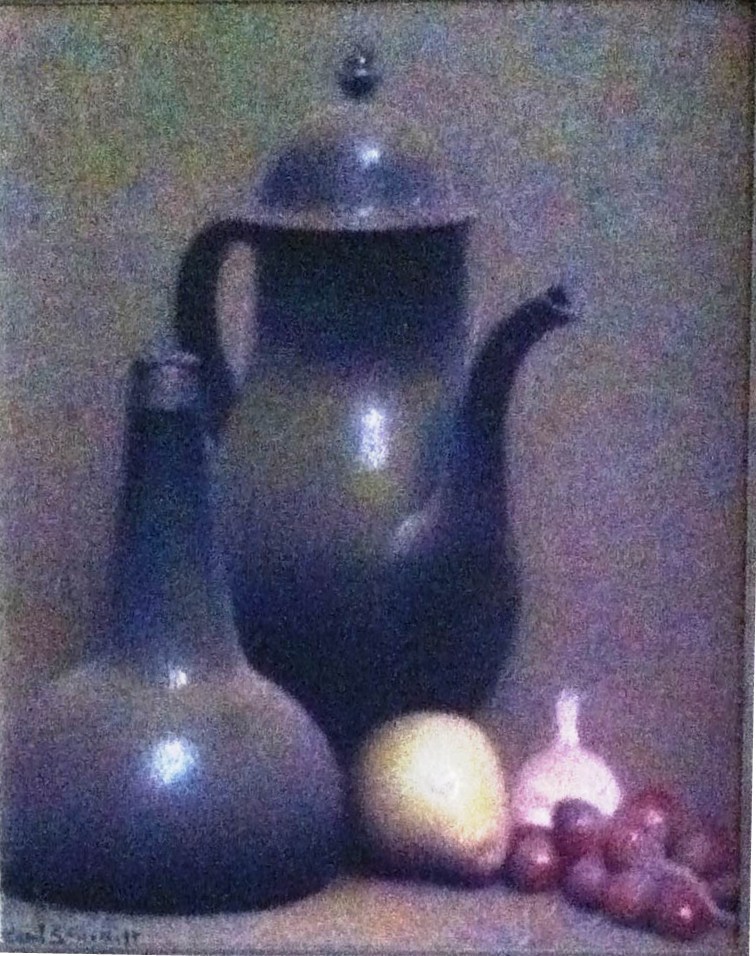 The sacred art of baroque of the 17th century (in contrast to 19th century naturalism) always plays down the individual characteristics with skillful use of shadow, depletion of color and variation in focus. This is not to exclude the particular altogether; we must know enough to know who is depicted. It is a question of balance. An example of how a baroque artist described this is given here.
The sacred art of baroque of the 17th century (in contrast to 19th century naturalism) always plays down the individual characteristics with skillful use of shadow, depletion of color and variation in focus. This is not to exclude the particular altogether; we must know enough to know who is depicted. It is a question of balance. An example of how a baroque artist described this is given here.
In a very 20th century way, Carl Schmitt has done the same here. I like also the way that he has set up the composition. The circular sweep that contains the main forms is well handled, introducing enough variation (for example in the tilt of the heads of the women) to stop them looking to rigidly bound by the compositional form.
Some might feel that there is too much 'general' and not enough 'particular' for their taste (it is something that crosses my mind). Regardless, I think it is a useful thing for today's artists to see how Schmitt has approached this problem, and at the very least avoided the pitfalls of so many current naturalistic artists.
I am delighted that this book features a large number of his very beautiful still lives. They show the same skillful balance of the general and particular and are reminiscent of the great French Master Chardin. You can read about him in an article I wrote entitled Cosmic Onions, What Does Still Life Have to Do with the Liturgy?. In these Schmitt demonstrates that he understands the baroque sensibility (developed in the century before Chardin) in which large areas of the painting are in soft focus and depleted of colour. This means that the hard edges, deep contrast and most brightly coloured areas correspond to those parts that we focus on naturally within the composition. He gives us information where we naturally seek it. This is how the naturalistic artist appeals to our natural way of look at the cosmos and delighting in it. The focus of the eye is sharp and coloured in the centre, but monochromatic and blurred in the extremes and when we look at the world around us, the intellect process this information so that what we see in our mind's eye delights us. God made us this way so that we delight in the beauty of his creation, and the skilfull artist understands this and gives us visual information that corresponds to this natural desire of the intellect.
I show several of his still lives below.

